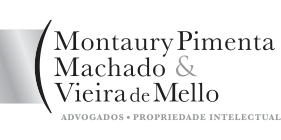Brazilian patent practitioners, and in particular those working with the PCT, will remember that for many years there were simultaneously two different time limits for entering the National Phase, namely:
1) 20 months from first filing where “PCT Chapter II” had not been requested. That is, where the “International Preliminary Report on Patentability” had not been demanded (this was the most common scenario).
2) 30 months where “PCT Chapter II” had been requested, i.e., when the so-called “Demand” had been filed.
During this time, clients often instructed us to enter the National Phase in Brazil when it was already too late, i.e., after the 20-month time limit had already lapsed, despite the fact that they had not filed the “Demand”. In such cases, there was no remedy, and the INPI (the Brazilian Patent Office) shelved all the relevant applications. Although a number of legal challenges resulted, none have been successful to date.
Our firm was also instructed by one of our clients to file a patent application in this situation, namely Brazilian patent application No. PI0419508-6. In that case, we received instructions to enter the National Phase after the time limit of 20 months, which ended on 22 January 2004, but before the time limit of 30 months, ending on 22 November 2004. PCT Chapter II had not been demanded so, in principle, the case was already lost, but the client did not disclose this information. Thus, since we were not aware that the time limit had expired, we entered the National Phase in good faith on 19 November 2004, 3 days before the end of the 30-month time limit.
On 30 January 2007, a first office action was published in the Brazilian Official Patent Gazette, requesting us to “Prove the election of Brazil by filing a copy of form IPEA/409, or of IPEA/408, or of IPEA/416, in accordance with N.A. 128.” It was only then that we realized what had happened. Of course we could not provide what the INPI was asking for, since PCT Chapter II had never been requested.
On 19 March 2007, we filed a reply to said office action, acknowledging that that the time-limit of 20 months had already lapsed, but stating that our true intention was to file a completely new patent application, without the PCT, and without claiming any priority. We contended that, while unfortunately we had happened to use the wrong form, it would be unfair to punish the applicant for a mere formal blunder. Moreover, our position was that, since the entire application was filed, including all its bibliographic data, it would be unfair to shelve the whole application only for having chosen the PCT form instead of the form for filing a new national patent application.
d) EUREKA! After 7 long years, on 19 August 2014 the INPI published an office action, requesting that we fill in and file the correct form, which request we duly complied with. In fact, this was the same as saying that they had accepted our application as a “normal” national non-PCT application. This meant that the application filing date was moved forward from the International filing date (21 May 2003) to the date of the entry into the National Phase (19 November 2004).
In the meantime, the applicant had unfortunately abandoned the application for its own reason, but in any case the INPI had indeed accepted our arguments and the application remained alive. The next obstacle would have been to demonstrate that the claimed subject matter was new and inventive. How would that be possible when identical patent family members had been published before the new filing date 19 November 2004?
Fortunately the Brazilian IP Law (in Article 12) foresees a grace period of 1 year, and the first patent family to have been published was the US counterpart, which had been published on 27 November 2003. Since our new filing date was 19 November 2004, this meant that we had filed it within less than a year of the first publication, and so the application would have been saved.
Fonte: Lexology - https://www.lexology.com/library/detail.aspx?g=ccf8be87-5c6e-4708-8446-12e2b79c4061




